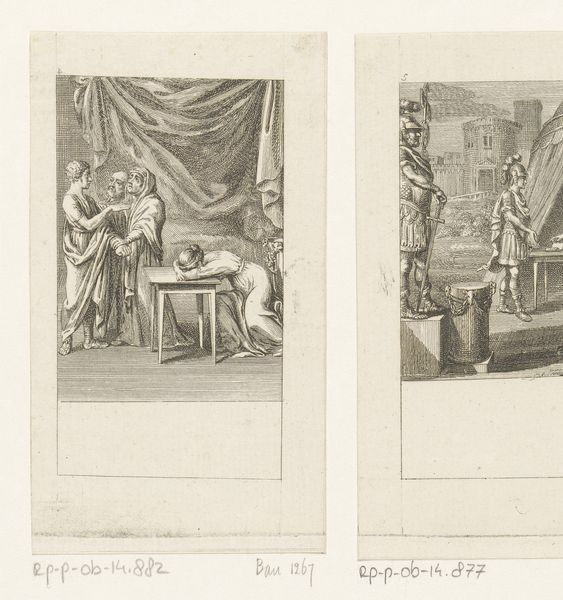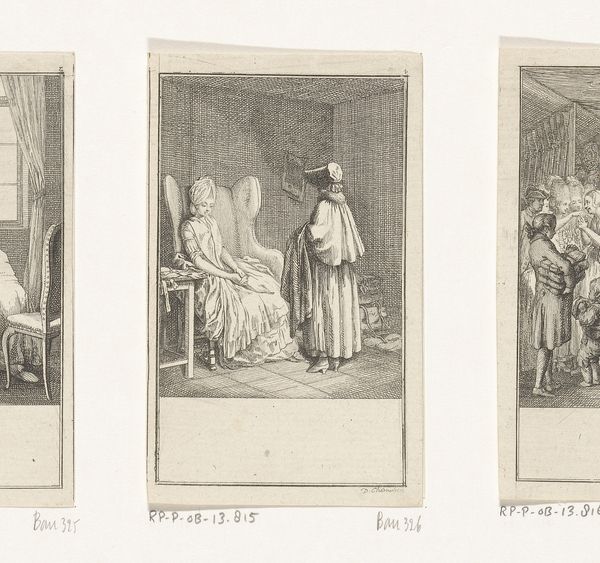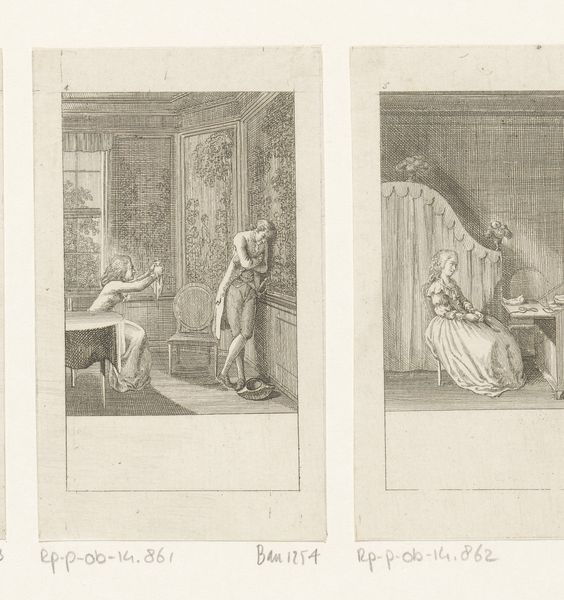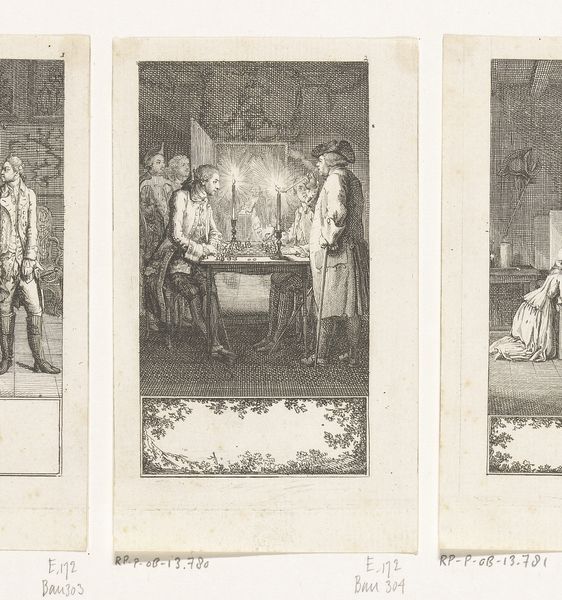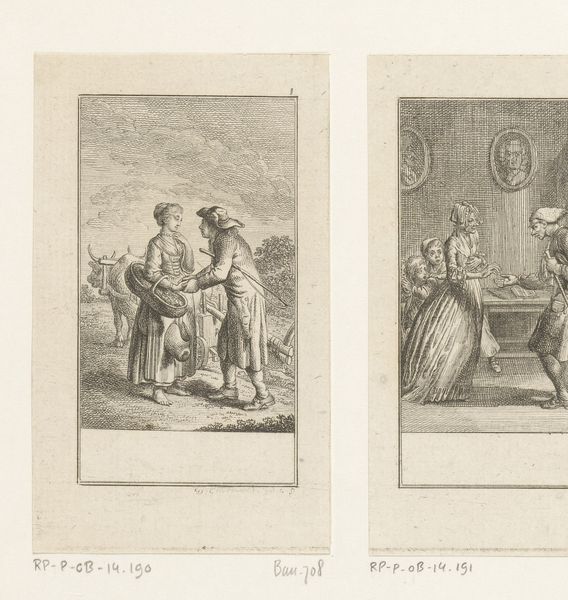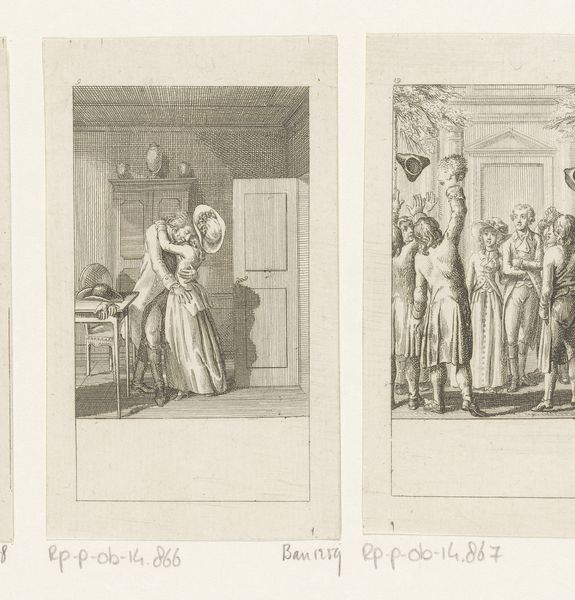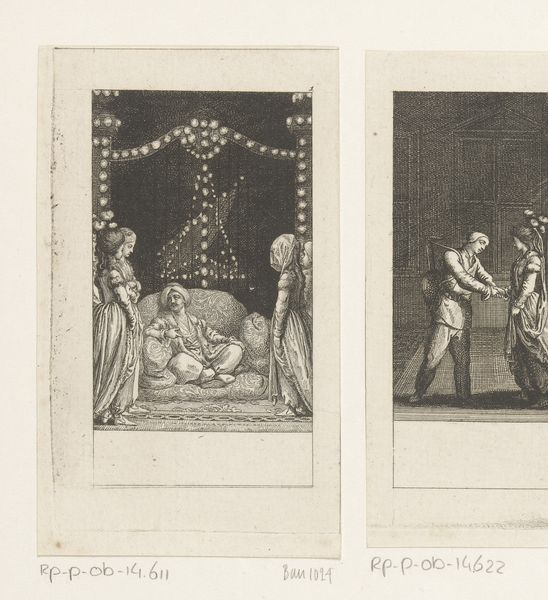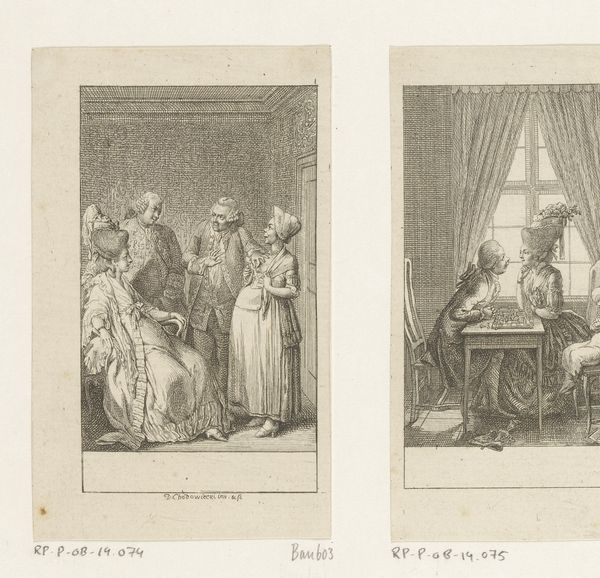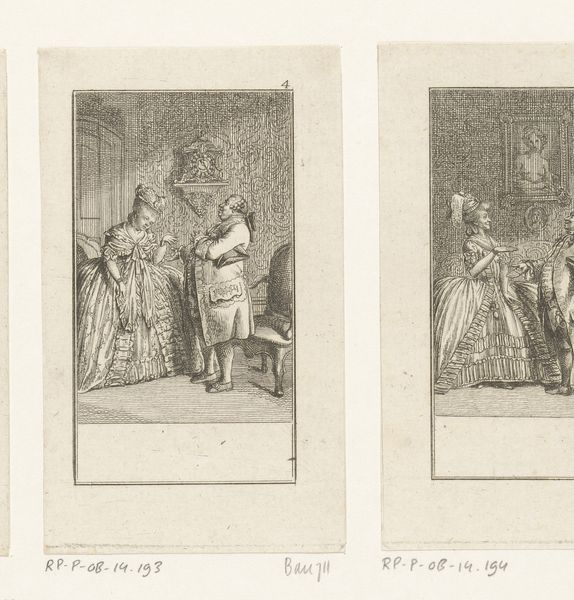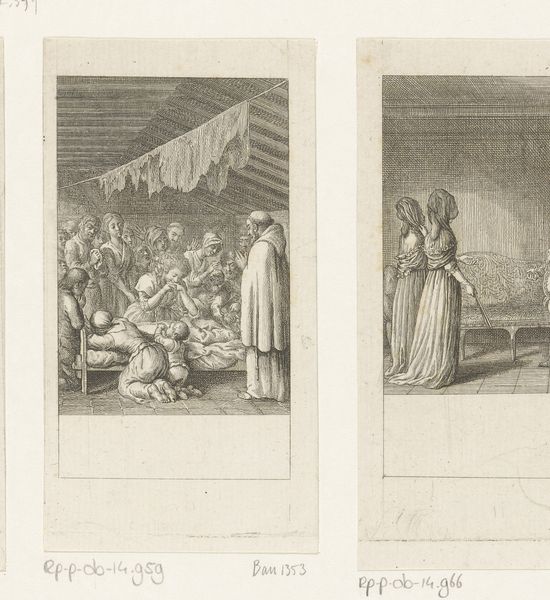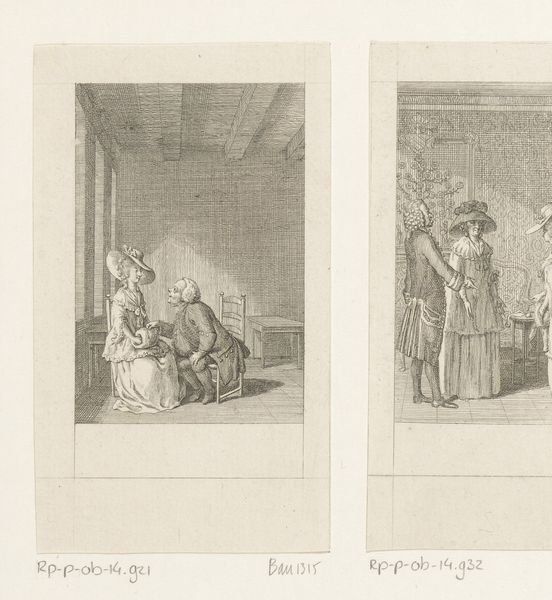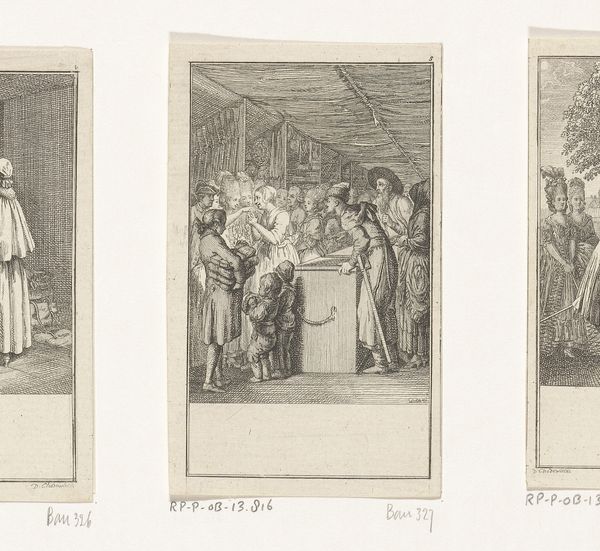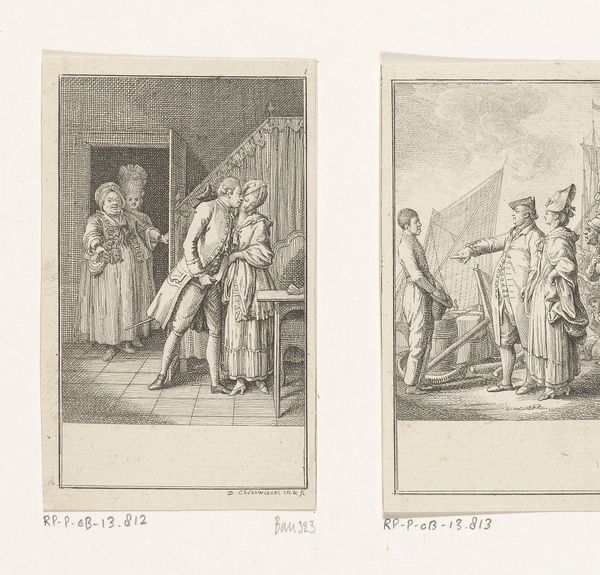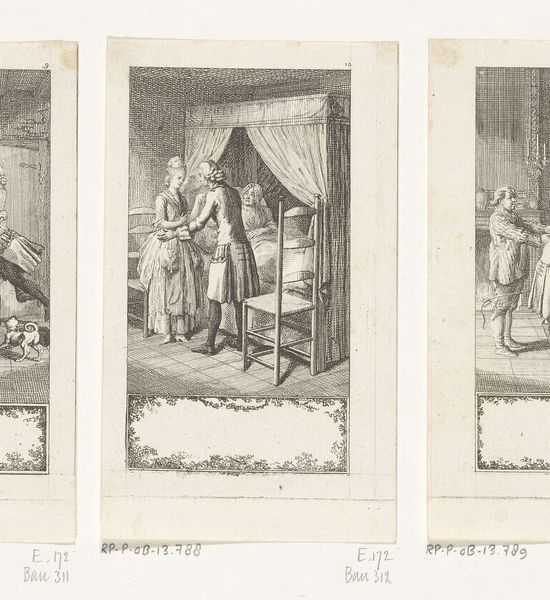
Sybille en Huon de Bordeaux plotten de moord op de reus Angolafer 1782
0:00
0:00
danielnikolauschodowiecki
Rijksmuseum
Dimensions: height 110 mm, width 67 mm
Copyright: Rijks Museum: Open Domain
Curator: This print, created by Daniel Nikolaus Chodowiecki in 1782, is titled "Sybille en Huon de Bordeaux plotten de moord op de reus Angolafer"—it's quite a mouthful! Editor: My eye is drawn immediately to the stark contrast. The dark, dense lines creating the forms against the plain background lend the scene a sense of urgency, a secretive, hushed quality despite the overt violence implied. Curator: Indeed. Chodowiecki has captured a pivotal moment in the narrative, a clear illustration of power dynamics and the conspiratorial relationships between men and women. Sybille appears to be strategically positioned to guide Huon's violent course. Editor: Precisely. Observe how the lines converge on the reclining figure of Angolafer, whose vulnerability is emphasized by his horizontal repose and open posture. This directional pull immediately identifies the focal point, underscoring the dramatic tension. The use of shadow around him makes the characters in attendance of the planning all the more powerful through tonal juxtoposition. Curator: I agree. Furthermore, the surrounding figures symbolize complicity and support within specific political circumstances of 18th-century societal structures in Western Europe. How their identities intersected to influence policies during the period needs further consideration. Editor: What’s compelling here is Chodowiecki’s adept manipulation of visual weight through line work. See how the density of the engraved lines creates a sense of mass and volume. This contributes to the illusion of three-dimensionality and draws us further into the scene’s reality, all accomplished through deceptively simple visual strategies. Curator: I think the work allows us a glimpse into the accepted patriarchal values embedded within even domestic spheres and courts that allowed political murders to unfold unpunished, which reflects certain systemic injustices during this time. Editor: Absolutely, and on a purely visual level, the strategic use of hatched lines enhances this perception. The composition, balanced yet asymmetrical, maintains a strong visual anchor while subtly propelling our gaze along the plotline itself. Curator: So, while Chodowiecki created an accessible rendering style through engraving that could be consumed by larger audiences to perpetuate norms, from a contemporary feminist viewpoint, one can also dissect it to subvert and challenge this kind of work and make art, as the case has always been, part of the revolution. Editor: Ultimately, Chodowiecki’s print showcases an engaging use of basic formal elements to invite viewers into both narrative understanding and interpretive consideration about class struggle, social positionality, and political strategy.
Comments
No comments
Be the first to comment and join the conversation on the ultimate creative platform.
